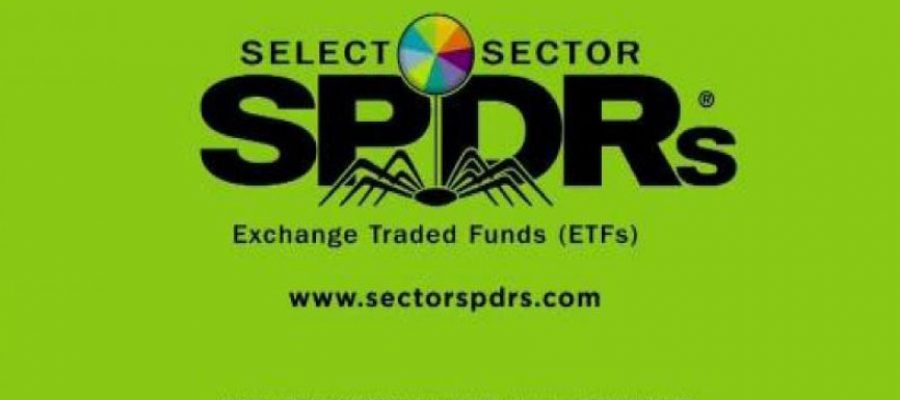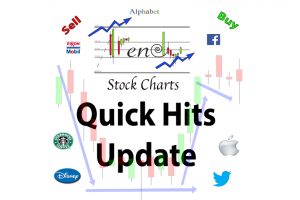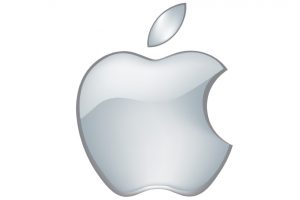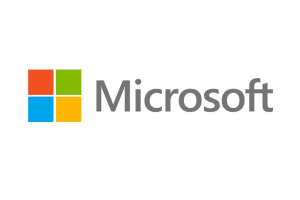The Financial Select Sector SPDR ETF (XLF) is a widely traded ticker symbol. Let’s review some charts for XLF since most individual bank stocks will track somewhat similar to the sector charts. Some banks will obviously perform better than others, but as long as the trend for the sector looks good, picking some individual winners in the sector should be a little easier.
Financial Select Sector SPDR ETF (XLF)
This first chart is a 1 year daily candlestick chart with moving averages overlaid. I’ve also outlined an Ascending Triangle wave pattern that appears to have completed. The results should be an indicating an impending breakout.

Analyzing Moving Averages on a 1 Year Daily Candlestick Chart for Financial Select Sector SPDR ETF (XLF)
Did you notice the buying volume during the consolidation the last couple of weeks? That typically indicates an upside breakout.
XLF – Ascending Triangle Wave Pattern
This same 1 year chart has 1 of the 2 probable outcomes for the potential breakout from the Ascending Triangle wave pattern. What I did was place a trendline on the first part of the uptrend from $17.25 up to the $20 area. I then duplicated that trendline with the charting software and moved the duplicate over to the breakout area. This is one method to calculate an upside price target.
Remember that Bullish Impulse wave patterns are used to advance the share price of a stock. Bullish Impulse wave patterns are almost always symmetrical in one way or another. Out of Waves 1, 3 and 5 in a Bullish Impulse wave pattern, two out of the 3 waves are very similar in length and time. The above illustration assumes the statistically probable pattern. However, in strong uptrends like the current Trump rally, Wave 5 might be a duplicate of Wave 3 instead of Wave 1. Let’s look at what the other outcome may look like.
XLF – $27 – $29 Price Targets
Here is the same chart where I left on the almost $27 price target from the black trendline estimate. On this chart, I also duplicated the trendline from the middle of the wave pattern. Sometimes Wave 5 of a Bullish Impulse Wave pattern duplicates Wave 3 instead of Wave 1. If that is the case, the blue trendline indicates a higher potential profit in a shorter time frame.
Most Bullish Impulse wave patterns that develop have a symmetry about them. The next advance can be measured with 1 of the 2 probable outcomes I’ve illustrated above.
Another sign that points to an upside breakout? The heaviest buying volume and best price action typically happens in the middle of a Wave 3 in a Bullish Impulse wave pattern. The middle of the uptrend looks pretty clearly defined so far. That means Wave 5 of the Bullish Impulse wave pattern still has to develop.
I tend to use the more conservative estimate as my initial price target to determine if the trade is worth entering. That way, any additional upside past the conservative price target can be considered a bonus. I do this even if I think the higher price target is more probable. It always pays to be more conservative when calculating your risk to reward ratio.
XLF – Summary
The MACD Histogram on the daily chart for Financial Select Sector SPDR ETF (XLF) is just beginning to show buying momentum. This could be the start of the breakout from the Ascending Triangle wave pattern to the $27 – $29 price objectives.
The strongest part of any uptrend is always the middle of it. The buying volume and price action clearly identify the middle of this uptrend.
If we can conclude that there is 15-20% more upside for the sector in general, individual stocks may fare better or worse. If you have any individual stocks in mind, I can calculate some upside price targets for those! Just drop the request in the Idea Chamber.
Watch out for any downside breaks on light selling volume early next week. It could be a bear trap. Trade accordingly and continue to monitor the daily MACD Histogram for continued buying momentum for this possible breakout early next week.


















Ask a Question. Make a Comment. Leave a Reply.